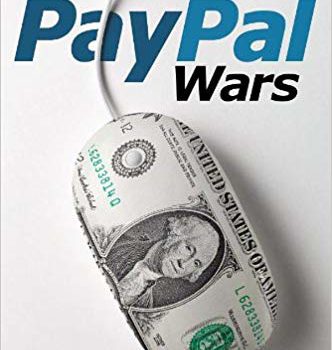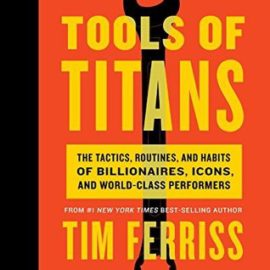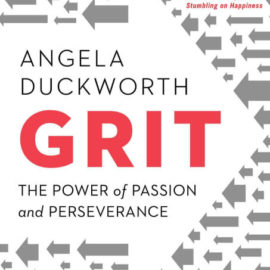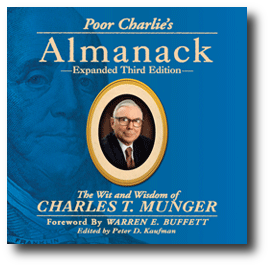

PayPal is now one of the world’s largest payment systems. Its early history was chaotic. Within just 4 years of its beginning in 1998, PayPal signed up millions of users, merged with Elon Musk’s X.com, raised hundreds of millions in funding, had 3 different CEOs, IPO’d, and sold to eBay in 2002. (It spun out as an independent company in 2015 and now has a market cap of $90 billion.)
The PayPal Wars is an account of PayPal’s early history, written by former Director of Marketing Eric Jackson. PayPal Wars describes the staggering hyper-growth and the relentless competition with direct competitors and financial incumbents.
This book is a nice complement to Reid Hoffman’s Blitzscaling. You can see how the crucible of PayPal’s chaos forged Reid’s philosophy of how winner-take-all companies arise and need to “move fast at all costs.”
Full Title: The PayPal Wars: Battles with eBay, the Media, the Mafia, and the Rest of Planet Earth, by Eric M. Jackson
Brief History of Paypal
- 1987: Peter Thiel founds a student publication, Stanford Review. Many of PayPal’s early employees, including the author, were involved with this publication.
- August 1998: Peter Thiel gives a talk at Stanford on globalization and political freedom. Max Levchin introduces himself. After hitting it off, they launch a company called Fieldlink around encrypted information on Palm Pilots. As an application, they gravitate toward electronic payments, allowing storage of money on Palm Pilots and transferring or “beaming” money through the IR interface. They rename the company Confinity.
- January 1999: Elon Musk founds X.com, with the vision of providing a financial portal for banking, investments, credit lines, index funds, etc.
- May 1999: eBy acquires credit card processing firm Billpoint.
- July 1999: Confinity receives $3 million in venture funding, beamed between Palm Pilots in a PR stunt.
- October 1999: Paypal is publicly launched, allowing anyone with an email address to send money. This broadens the market beyond Palm owners.
- Critically, PayPal offers a $10 referral bonus for each new user, and $10 just for registering. This becomes their biggest driver of user growth, and also one of their biggest burns of money.
- [Reid Hoffman takes credit for pushing to launch the web version – it began as more of an afterthought.]
- December 1999: PayPal runs a promotion with Scotty from Star Trek, beaming $1 million of free money to randomly selected users. The author notes this flopped, with little media attention.
- December 1999: Fast followers launch and compete with PayPal.
- dotBank mimics PayPal’s functionality and gives away $5 referral bonus. PayPal copies its features of group payments and invoicing.
- X.com mimics PayPal’s email payments on top of its existing bank account service. They offer a $20 bonus to new users.
- December 1999: The author is tasked with spending $1 million for marketing. He focuses on online auctions, where most sellers didn’t have the volume to qualify for merchant processing accounts, meaning buyers had to mail checks (!).
- Over the weeks, PayPal rapidly spreads through the eBay seller community. Sellers add PayPal logos and signup links to auction descriptions, hoping to earn the referral bonus as well as transact quickly once the auction closes.
- Within weeks, they make eBay their central focus, hoping to build network effects among a tight-knit community that would transact often. They build a tool to login as the eBay seller and insert PayPal automatically into auction listings.
- X.com follows them onto eBay within days. dotBank does not, and the author suggests this is part of the reason dotBank struggles to gain traction and later dies.
- End 1999: PayPal has 10,000 accounts.
- January 2000: Confinity raises $23 million in Series B from idealab Capital Partners (idealab would later compete with them) and Goldman Sachs.
- January 2000: PayPal develops a bot to automatically message eBay sellers, saying they’ll bid on auctions if they accept PayPal. Whatever items they win are donated to charity.
- Late January: PayPal has 100,000 accounts and begins signing 10,000 accounts per day. But this also means they’re paying out over $100,000 per day in bonuses to customers!
- Furthermore, since few PayPal users kept balances, most of them used credit cards to fund payments, which cost Confinity 2% on each transaction.
- February 2000: PayPal’s “listing share,” or % of auctions with PayPal supported, reaches 6%.
- February 2000: ideaLab (who had invested in Confinity) launches PayMe for email payments.
- March 2000: Confinity merges with Elon Musk’s X.com. The strategy is to avoid costly competition, use PayPal to acquire users, then upsell them to X.com’s services (like their no-minimum S&P index fund) to bring in revenue.
- Bill Harris, former CEO of Intuit and CEO of X.com, becomes new CEO. X.com
- Confinity execs Peter, Max, and Reid retain leadership positions.
- March 2000: Competition heats up from major competitors. Everyone vies for online payments supremacy.
- eBay announces Billpoint, its own payment service. Wells Fargo has a 35% stake and provides back-end processing and customer support. eBay later signs Visa as a partner.
- Around this time Amazon acquires Accept and has its own online auction business.
- Yahoo acquires dotBank to bolster its online auctions business (currently ¼ the listing size of eBay) and launches PayDirect.
- Bank One launches eMoneyMail.
- Idealab’s PayMe merges with its PayMyBills.com.
- End of March 2000: eBay launches its first attack on PayPal by limiting the pixel size of third party logos in sellers’ listings.
- End of March 2000: PayPal’s “listing share” is 20%, up from 10% at the beginning of March. 18,000 customers per day are registering; they cross 1 million users. They process more than $1 million in daily payments, double February.
- They book $1.2 million in revenue against $23.5 in operational expenses. Cash on hand is down to a few million.
- The rapid user growth also causes a torrent of customer service issues they struggle to resolve.
- End of March 2000: The stock market begins its freefall.
- April 2000: X.com raises a $100 million round, just in time to avoid the pressure of the falling stock market.
- April 2000: eBay launches Billpoint, promoting it with a free listing day for sellers who include it as an option in their listing.
- Within a day Billpoint’s listing share grows from 1% to 10%. The team is demoralized, but it settles at 6% after the promotion. In mid-May, PayPal’s share is 35%, compared to Billpoint’s 9%.
- Billpoint struggles to gain traction because it required fees, had no referral bonuses, and lacked PayPal’s features.
- April 2000: X.com establishes a 500-person customer service center in Omaha, NE.
- May 2000: In the face of growth, X.com struggles to maintain website performance, customer service, and a sustainable business model. It has failed to upsell PayPal users on X.com’s financial products – their back-ends aren’t even compatible yet.
- Bill Harris himself had focused on business development deals, like with social group websites eGroups and eCircles and pay-to-surf website AllAdvantage. These companies didn’t have working business models would be gone within a year.
- May 5: Peter Thiel announces his resignation as EVP. The author believes conflicts with Harris caused this – Harris wanted to charge customers a fee to send money, which Peter opposed (Bank One had done this and it killed eMoneyMail). Also, Harris used company funds to donate $25k to the Democratic party.
- May 11: Elon Musk rallies the board to remove Bill Harris and appoint himself as CEO, and Peter Thiel as chairman.
- June 2000: X.com forms a new product team (the “producers”) with 5 members, meant to get things built. Their focus areas are business features, anti-fraud, partner products, auction products, and product marketing.
- [Note that only one person, the author, is in charge of day to day marketing for a company of this scale!]
- June 2000: X.com needs to make money – it’s burning $10 million a month on signup bonuses and credit card processing.
- They also introduce business accounts without credit card limits and with 24-hour support, but requiring 1.9% for each transaction.
- To decrease credit card use, they offer “instant ACH transfers,” where ACH funds are made instantly available using credit cards as collateral.
- They also launch with a $1,000 lifetime credit card payment max for senders, but after user outrage they dial it back to $2,000 every 6 months, and promise never to force sellers to upgrade to fee-bearing accounts.
- June 13 2000: eBay acquires half.com where sellers can post standardized goods at fixed prices. PayPal fears that half.com would make Billpoint the mandatory processor, cutting PayPal out.
- July 2000: More features from the producers:
- PayPal launches a one-click checkout for e-commerce sites, adding it as a premium feature for their business accounts.
- They also require bank account registration to receive the $5 bonus or to be “verified,” which helps encourage use of bank accounts rather than credit cards and reduces fraud risks by offloading background checks to banks. They also offer a transaction guarantee for money sent to verified users.
- July-August 2000: Tensions mount with Musk’s leadership.
- Musk prefers to migrate PayPal from Oracle to onto Windows NT, which has issues with stability. Max Levchin threatens to leave over this.
- Musk also announces a feature freeze until the migration is complete, which restricts their ability to reduce cash burn and improve fraud and customer service problems.
- In Q3, daily payments reach $4.6 million, but they lose $150,000 every day. Fraud alone takes up $5 million, or 1.2% of all payment volume. By end of Q3, they would have $92 million in operating losses against revenues of $6 million.
- There is a long-standing friction over branding. X.com has baggage (association with sex, X files, youthful X-games) while PayPal had far stronger loyalty. But Elon is married to X and insists on branding X-PayPal. Rumor: he paid $1 million for the domain. Elon orders the PayPal brand to be removed from the website; David Sacks (Confinity VP of strategy, turned VP of website design) says Elon will have to fire him to get it to change.
- October 2000: PayPal staff mount a rebellion to oust Musk as CEO while he’s at the Sydney Olympic Games, with Peter Thiel taking the role.
- Max Levchin instigates the effort, recruiting Sacks, Hoffman, and large parts of the company to sign a petition threatening to leave if the board doesn’t remove Elon.
- Peter reverses course, pausing the PayPal recoding to focus on stabilizing cashflow, and returning to the PayPal brand. He also kills the X.com banking division.
- October 2000: Cost-cutting measures:
- The author launches a requirement to restrict free PayPal accounts to $500 in credit card transactions every six months. This is initially controversial, but most sellers adopt it rather than stop accepting PayPal.
- “PayPal gave it away for free until they got us hooked and then started charging.” People will always hate being charged for things that were once free, even if they should appreciate that they got free stuff to begin with.
- Seller protection is tightened to require proof of shipment. Buyer protection is tightened to have a $50 deductible and $200 cap.
- The author launches a requirement to restrict free PayPal accounts to $500 in credit card transactions every six months. This is initially controversial, but most sellers adopt it rather than stop accepting PayPal.
- October 2000: eBay launches more attacks, with the new Buy It Now feature that funnels users into Billpoint by default, and rebranding Billpoint as eBay Payments.
- PayPal continues launching international accounts and interest on PayPal balances (thus incentivizing a balance and reducing credit card payments).
- End 2000: As a result of the business accounts, PayPal is showing better financials.
- They have processed $1 billion in payments all-time, and reach $6 million per day, increasing 29% from Q3.
- Q4 shows $25.4 on losses vs $7.4 million in revenue, compared to $36.7 million in losses vs $1.0 million in revenue in Q3. Transaction margins improve from -3.28% in Q3 to -0.92% in Q4.
- PayPal has listing share of 50%, compared to Billpoint’s 20%.
- January 2001: Yahoo Auctions, once a viable competitor to eBay, suffers due to parent Yahoo’s suffering in the dotcom burst and is required to monetize. It ends its free auctions and implements fees, tanking the number of Yahoo listings by 80%. eBay emerges as the dominant auction platform.
- Yahoo had cleverly tried to allow sellers to import eBay feedback ratings into Yahoo profile, to lower the switching costs. But eBay won a legal protest against this.
- This weakens PayPal’s position, since having viable competitors to eBay would diversify PayPal’s revenue and discourage eBay from banning PayPal outright (since sellers could flee to another site).
- January 2001: PayPal launches a few offenses:
- PayPal Preferred, giving 1.5% cash back to sellers for using debit cards, conditional on their making PayPal the only payment service in their auctions. This in effect reduces seller fees in exchange for removing Billpoint.
- PayPal Shops, encouraging users to transact off-eBay.
- Winning Bidder Notification, sending emails to winning buyers with PayPal instructions
- Smart Logos, that turned referral logos into bright Pay Now buttons once bidding ended.
- Defensive: PayPal launches the “reverse Turing test” (aka CAPTCHA) to reduce fraudulent account signups. They also freeze accounts with suspicious transaction activity (incurring some false positive along the way).
- March 2001: Revenues increase to $13.2 million in the quarter and losses narrowed to $12.1 million. Volume increased by 18% to $7 million each day.
- March 2001: PayPal raises a $90 million Series D, bringing cash on hand to $130 million.
- June 2001: eBay attacks.
- They launch eBay Stores, letting sellers own their own branded storefronts. It limits payment options to credit card merchant accounts or Billpoint. PayPal threatens legal action (on antitrust grounds), and eBay relents, allowing PayPal in the terms of service.
- eBay auto-checks the Billpoint option when sellers create new listings, causing a jump from 25% to 30% overnight (PayPal is at 70%). PayPal notifies their sellers, warning them of the move and advising they shut down Billpoint accounts. eBay reverts this feature and their auction share returns to 25%.
- July 2001: Peter Thiel wants to diversify revenues. They push Website payment products, allowing sellers to use PayPal on their own storefronts. Billpoint cannot compete here, since eBay does not want to move transactions off of eBay.
- They also look into online gambling and pornography; while employees are generally OK with the first, they dislike the second.
- September 11 2001: World Trade Center is attacked. eBay launches an Auction for America campaign, letting users auction items for charity. However, this is criticized by sellers for flooding the marketplace with charity auctions, and by making Billpoint mandatory.
- September 28 2001: PayPal files to IPO, the first company to do so after 9/11. They want to raise $80 million at a valuation of around $800 million.
- Press reaction is largely negative. After the dotcom bubble, people are skeptical of its lack of profits.
- They learn from eBay’s IPO mistake of not allowing top sellers into the IPO process. PayPal carves out a portion of shares for 10k of their customers.
- October 2001: eBay launches Checkout, led by Jeff Jordan. This is mandatory on all US listings and funnels users exclusively to Billpoint.
- Sellers complain that it disrupts their longtime workflows of collecting buyer shipping info and providing payment instructions. eBay removes the feature by mid-November.
- PayPal also builds a “turn off Checkout” feature that logs into eBay accounts to disable Checkout.
- End 2001: PayPal has $103.7 million in revenue. Adds 20k new accounts each day and reaches 12.8 million users.
- Also, PayPal finally reaches profitability on its operations, excluding stock compensation and goodwill amortization.
- End 2001: eBay CEO Meg Whitman approaches Peter Thiel with an acquisition offer at a price slightly below the IPO valuation. The board rejects, wanting to see the upside of the IPO.
- February 6 2002: Close to the IPO date, PayPal attracts opportunistic legal action.
- CertCo sues PayPal for patent infringement, triggering requirements to amend the prospectus for investors and delaying the IPO.
- Days after, Louisiana’s AG ordered a cease and desist until PayPal received a money transfer license. PayPal scrambles to contact every state and prevent another such injunction.
- The SEC accuses PayPal of violating the quiet period, when they ordered a brand survey from Gartner.
- With all this action, Peter Thiel pushes to get the IPO out the door as quickly as possible, sacrificing some valuation.
- February 15 2002: PayPal completes IPO, raising $70 million at valuation of about $800 million.
- Late February 2002: eBay buys out Wells Fargo’s stake in Billpoint, suggesting an imminent offense on PayPal.
- April 2002: eBay resumes talks to acquire PayPal, now valued at over $1 billion.
- This would end the bloody rivalry and secure PayPal’s position in auctions, but it would also constrain PayPal within eBay’s walls, stifling the vision of becoming the “operating system for payments.”
- But rumor of the talk jumps PayPal’s share price, which stalls the talks and breed mistrust.
- May 2002: PayPal has 750 full time employees, with 541 in customer service.
- May 2002: PayPal hits some rough patches.
- Their auction payment volume stalls for the first time. Its share is constant at 70% – eBay itself might be going through a slump.
- Class action lawsuits appear around their anti-fraud false positives freezing legitimate seller accounts.
- A secondary offering designed to stagger the lock-up period drives down share price. From a high of $30, the price is down to $19 in late June.
- eBay threatens to fight back with Billpoint, and the PayPal team is weary.
- June 2002: eBay hosts eBay Live for its community and partners. PayPal is an official vendor, and they raise their profile, giving away free t-shirts at a large reception and giving prizes to people who wore the T-shirt at the convention the next day. This causes 1 in 4 attendees to wear PayPal T-shirts – embarrassing for eBay.
- July 8, 2002: eBay announces the acquisition of PayPal for $1.5 billion in eBay stock, an 18% premium over the current stock price. At this point, more than 70% of all eBay auctions accept PayPal, and ¼ closed actions settle via PayPal.
- Meg Whitman speaks at PayPal, striking a conciliatory tone. “How many of you have bought or sold on eBay? This morning I asked eBay how many used PayPal. 98% f them raised their hands.”
- PayPal management had decided that If the war with eBay had continued, it would have reached a point of no return where future compromise was impossible.
- October 2002: PayPal and eBay near the closing of their acquisition and begin collaborating on integration. The author notes that eBay’s culture is heavyweight and bureaucratic – meetings call for any stakeholder who is remotely involved, little is decided, and execution is slow. No wonder Billpoint took so long to implement!
Notes
- Mission of PayPal: Paper money is outdated – inconvenient, can be lost. People now need a form of money that can be accessed anywhere through the Internet. This will not just be convenient for the developed world, it’ll be revolutionary for the developing world. It’ll protect citizens from governments that manipulate currency; these people can transfer money without borders, exchanging for stable currencies in offshore accounts. We will become the Microsoft of payments, the financial operating system of the world.
- The author notes that PayPal was quite far from achieving this mission, especially as they hunkered down around their core use case of online auctions.
Team
- In early days, Peter Thiel hired people he trusted and were generally intelligent, rather than specialists. They were expected to figure out how to do marketing and customer service. Many employees came from Stanford Review alumni.
- In today’s startup standards, PayPal’s team was surprisingly small for their scale – at various points they had 1 HTML designer, 3 marketing people, 5 product managers. Around the time of acquisition they had only about 200 employees outside customer service. I suppose with their generous bonuses, they couldn’t really afford to have more staff anyway.
- Many important ideas that changed the company’s course came from staff.
- Web payment instead of Palm device focus.
- Acquiring users through eBay as a growth channel, later making this their entire focus
- PayPal’s early team is known for its prolific founding of other companies
- Elon Musk of SpaceX, Peter Thiel of Palantir and Founders Fund, Reid Hoffman of LinkedIn, Max Levchin of Slide, David Sacks of Yammer, the Youtube founders, Jeremy Stoppelman of Yelp, Dave McClure of 500 Startups, and more.
- This is likely no accident, as PayPal’s culture deliberately selected for the entrepreneurial, and its success post-dotcom recession put its team in a fantastic position when others were licking their wounds.
Strategy
- As covered in Blitzscaling, in winner-takes-all markets, being profit positive dampens growth. If you’re playing this game, you may have to burn money for a while to get market dominance, then extract profits later.
- In general, PayPal’s strategy was:
- Monetization was done by mandatory transaction fees triggered by usage limits.
- Losses were limited by giving reasons to keep money in Paypal (interest, debit card), reducing fraud through extending guarantee only to verified people, encouraging ACH purchases instead of credit cards.
- Competing with eBay/Billpoint was done by incentives to keep sellers using Paypal (debit card cash back if seller only used Paypal to accept, lower fees, chargeback protection), getting user eBay logins and auto turning off Paypal features
- eBay fought back through UX funneling to Billpoint and free listing days when accepting with billpoint
- PayPal used % of eBay listings as one of their guiding metrics.
- How could eBay have just locked out PayPal entirely? I suppose that if eBay allowed parties to transact outside eBay (eg by sending checks), then there was no real way to disable PayPal.





